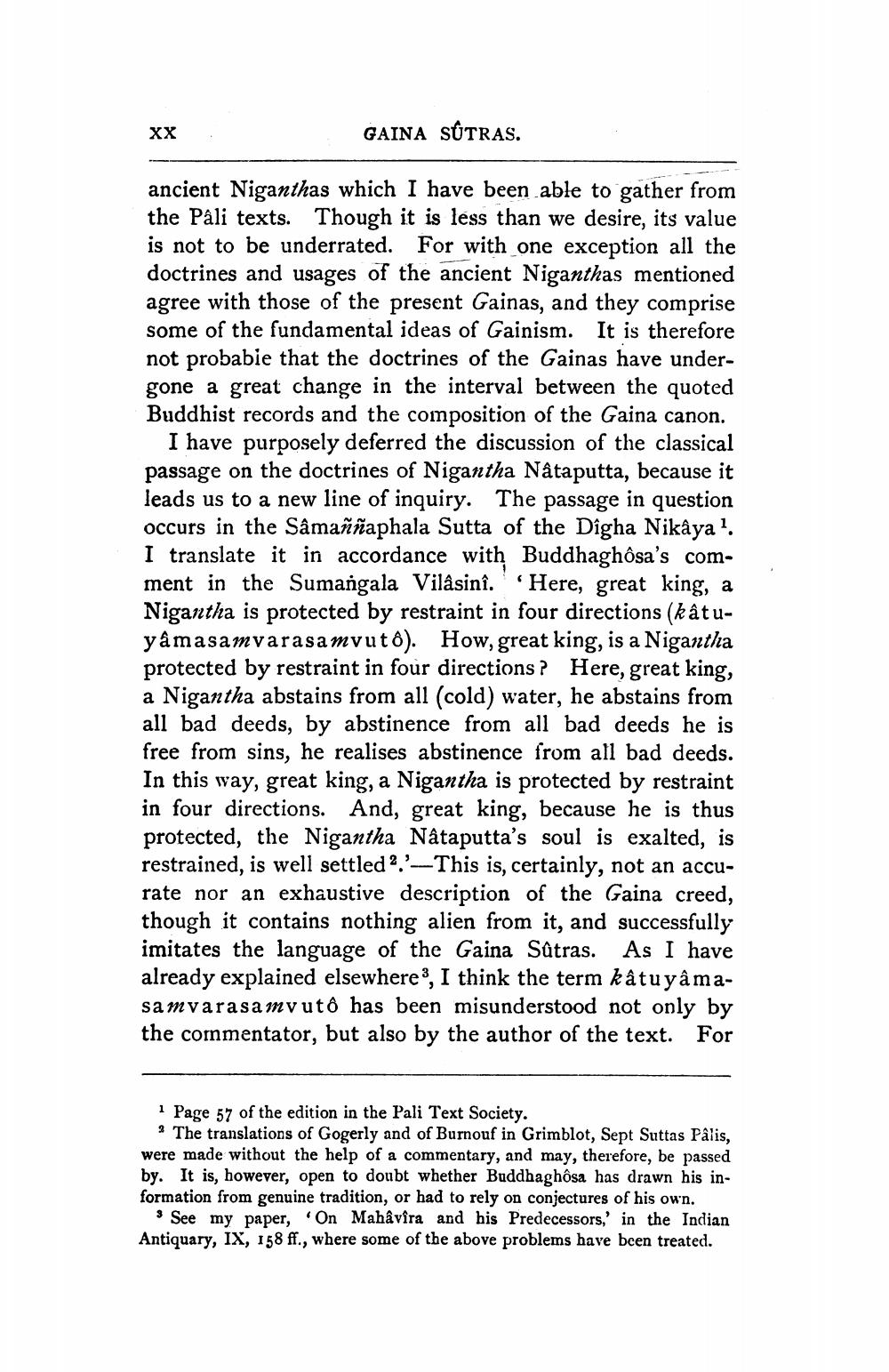________________ Xx . GAINA SUTRAS. ancient Niganthas which I have been able to gather from the Pali texts. Though it is less than we desire, its value is not to be underrated. For with one exception all the doctrines and usages of the ancient Niganthas mentioned agree with those of the present Gainas, and they comprise some of the fundamental ideas of Gainism. It is therefore not probabie that the doctrines of the Gainas have undergone a great change in the interval between the quoted Buddhist records and the composition of the Gaina canon. I have purposely deferred the discussion of the classical passage on the doctrines of Nigantha Nataputta, because it leads us to a new line of inquiry. The passage in question occurs in the Samannaphala Sutta of the Digha Nikaya 1. I translate it in accordance with Buddhaghosa's comment in the Sumangala Vilasini.' 'Here, great king, a Nigantha is protected by restraint in four directions (katuyamasamvarasamvuto). How, great king, is a Nigantha protected by restraint in four directions? Here, great king, a Nigantha abstains from all (cold) water, he abstains from all bad deeds, by abstinence from all bad deeds he is free from sins, he realises abstinence from all bad deeds. In this way, great king, a Nigantha is protected by restraint in four directions. And, great king, because he is thus protected, the Nigantha Nataputta's soul is exalted, is restrained, is well settled2.'--This is, certainly, not an accurate nor an exhaustive description of the Gaina creed, though it contains nothing alien from it, and successfully imitates the language of the Gaina Satras. As I have already explained elsewhere?, I think the term katuyamasamvarasamvuto has been misunderstood not only by the commentator, but also by the author of the text. For 1 Page 57 of the edition in the Pali Text Society. % The translations of Gogerly and of Burnouf in Grimblot, Sept Suttas Palis, were made without the help of a commentary, and may, therefore, be passed by. It is, however, open to doubt whether Buddhaghosa has drawn his information from genuine tradition, or had to rely on conjectures of his own. * See my paper, On Mahavira and his Predecessors,' in the Indian Antiquary, IX, 158 ff., where some of the above problems have been treated.




